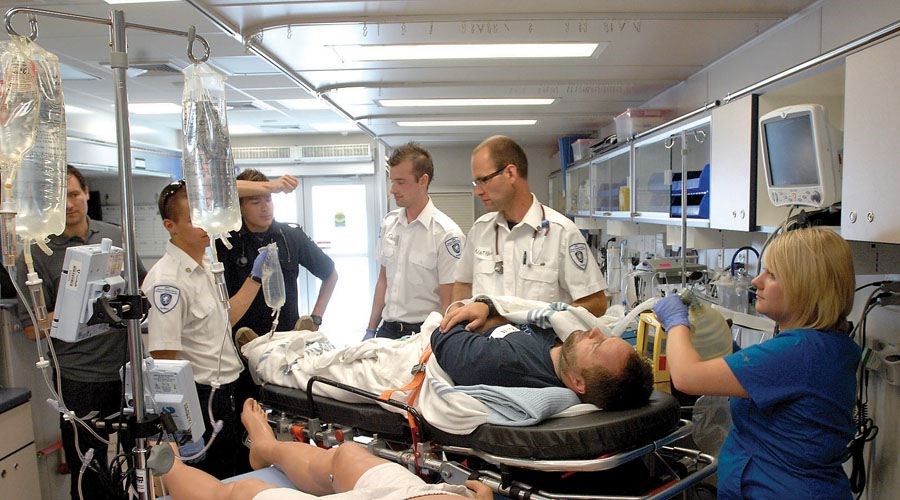The parking lot at CNC became a medical training lab Thursday as nursing and paramedic students joined together to test their skills in a real-world setting.
For the first time in northern B.C., nursing students from UNBC and paramedic students from the Justice Institute of British Columbia worked together just as they would in professional setting. The visit of the mobile medical unit, a hospital on wheels, was the catalyst for the exercise, which included simulated trauma, drug overdose, cardiac arrest and severe allergic reaction scenarios.
"It's as realistic as we can make it," Justice Institute program manager Michelle Finlay explained as the students prepared for one of the drills. "We're using live patients, high fidelity mannequins and we're using all the equipment, but it's a safe environment because it's just a skit,"
For each scenario, the paramedic students were dispatched to a call somewhere in the college parking lot and had to drive ambulances to the scene. They stabilized the live action patient and transported them to the mobile hospital where they handed them off to the nursing students.
The nurses then used a high tech mannequin to continue to treat the patient.
"From our point of view, they get to see what we do out on the street before we bring the patients to them," recent Justice Institute paramedic graduate Dakota Stone said. "Then we get to see what they do when we present them with a patient."
Among the key skills the two groups worked was the communication that needs to happen between paramedics and nurses so the patient can get the best treatment possible.
During the scenarios the paramedic students radioed in ahead of time so the nursing students were able to marshal the resources needed inside the hospital.
"It's so real life," nursing student Andrea Sherry said of the experience. "Even just being able to see the transition between the paramedics and the nursing staff we don't get that [in school]."
In addition to learning how to work together, the students also had the opportunity to experience what it's like to work in the tight quarters of the mobile unit. Originally brought to B.C. for the 2010 Olympics, the mobile hospital can be used at mass gatherings, to provide temporary medical facilities in the event of planned or unplanned hospital renovations or for training exercises.
Stone said the paramedics had to adjust to the facility by bringing patients in head first, rather than feet first because there's no room inside the unit to turn around.
Nursing student Joanna Vanderkraan was impressed at the facilities inside the tractor-trailer turned hospital and said it wasn't any different to what she's seen at other more permanent medical institutions.
The nursing students involved in Thursday's training were all on their summer break, but volunteered to come in for the extra session to get the unique opportunity to work with the paramedics.
"It boosts our confidence," Vanderkraan said. "It's teaching us what we know and what we don't know."



